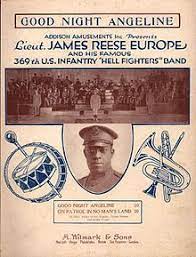
Daily Dose Of Jazz…
James Reese Europe was born on February 22, 1881 in Mobile, Alabama and in 1891 his family moved to Washington, D.C. In 1904 he moved to New York City and six years later he organized the Clef Club, a society for Black Americans in the music industry. In 1912, the club, with its 125 members who played in various configurations, made history when they became the first band to play a proto-jazza concert at Carnegie Hall for the benefit of the Colored Music Settlement School.
The importance of this historic concert is that it took place 12 years before the Paul Whiteman and George Gershwin concert at Aeolian Hall, and 26 years before Benny Goodman’s famed concert at Carnegie. The Clef Club’s performances played music written solely by Black composers, including Harry T. Burleigh and Samuel Coleridge-Taylor.
In 1913 and 1914 Jim made a series of phonograph records for the Victor Talking Machine Company. These recordings are some of the best examples of the pre-jazz hot ragtime style of the U.S. Northeast of the 1910s, predating and protecting the idea that the Original Dixieland Jass Band recorded the first jazz pieces in 1917 for Victor.
Europe was known for his outspoken personality and unwillingness to bend to musical conventions, particularly in his insistence on playing his own style of music. During World War I, Europe obtained a commission in the New York Army National Guard, where he fought as a lieutenant with the 369th Infantry Regiment otherwise known as the “Harlem Hellfighters” when it was assigned to the French Army. He went on to direct the regimental band to great acclaim. They made their first recordings in France for the Pathé Brothers.
Returning home in 1919 he made more records for Pathé with Noble Sissle and continued to lead his band. During a talk backstage with two of his drummers, Steve and Herbert Wright about their stage behavior, Herbert got agitated and stabbed Europe in the neck with a pen knife. The show went on, Jim went to the hospital but doctors were unable to stem the flow of blood.
Arranger, composer and bandleader Jim Europe, who also played piano and violin, and was the leading ragtime and early jazz figure on the Negro music scene of New York City in the 1910s, transitioned on May 9, 1919.
More Posts: arranger,bandleader,composer,history,instrumental,jazz,music,piano,violin
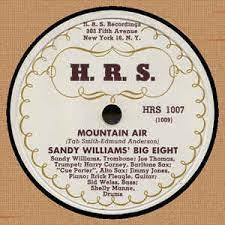
Daily Dose Of Jazz…
Alexander Balos “Sandy” Williams was born on October 24, 1906 in Summerville, South Carolina, the son of a preacher. The family of thirteen moved to Washington D.C. when he was very young however, losing their parents six months apart, they were sent to an orphanage in Delaware. There he joined the school band, but was put on tuba rather than trombone despite his requests. Taking private lessons while attending Armstrong High School, he occasionally played with his professor’s sons, and played with several bands before he started playing with the Lincoln Theater pit band.
Fletcher Henderson strongly influenced Williams jazz musicianship which received local notice. He played with Claude Hopkins, and later in 1929 joined Horace Henderson. He became a staple player in the Chick Webb band from 1933-1940 where he later worked with Ella Fitzgerald. Through the Forties he went on to work with other bands including Cootie Williams, Sidney Bechet, Duke Ellington, Art Hodes and Roy Eldridge, with whom he toured Europe in 1947.
By the early Forties Sandy was suffering from alcoholism, and despite his attempts to become sober, he continued to drink with many of his band leaders until he suffered from a severe breakdown with his health in 1950 causing him to retire from music.
Although he attempted to return to music, his dental health affected his embouchure causing him to quit music entirely. Trombonist Sandy Williams passed away on March 25, 1991 in New York City.
More Posts: bandleader,history,instrumental,jazz,music,trombone
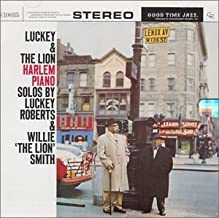
Daily Dose Of Jazz…
Luckey Roberts was born Charles Luckyth Roberts on August 7, 1887 in Philadelphia, Pennsylvania, and was playing piano and acting professionally with traveling Negro minstrel shows in his childhood. Settling in New York City about 1910 he became one of the leading pianists in Harlem, and started publishing some of his original rags.
Roberts toured France and the UK with James Reese Europe during World War I, then returned to New York where he wrote music for various shows and recorded piano rolls. With James P. Johnson, he developed the stride piano style of playing about 1919.
His reach on the keyboard was unusually large and Luckey could reach a fourteenth, leading to a rumor that he had the webbing between his fingers surgically cut. Those who knew him and saw him play live denounced it as false, he simply had naturally large hands with a wide finger spread.
By the 1920s Roberts teamed up with lyricist Alex C. Rogers, co-wrote three Broadway musicals, Go-Go and Sharlee in 1923, and My Magnolia in 1926, the latter starred Adelaide Hall, a major black revue star.
Hisnoted compositions include Junk Man Rag, Moonlight Cocktail, Pork and Beans, and Railroad Blues. The Glenn Miller Orchestra recorded Moonlight Cocktail, and was the best selling record in the United States for ten weeks in 1942.An astute businessman, he became a millionaire twice through real estate dealings. Pianist and composer Luckey Roberts, who recorded piano solos with Willie “the Lion “ Smith, passed away on February 5, 1968 in New York City.
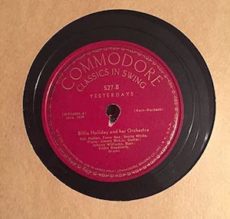
Daily Dose Of Jazz…
Eddie Dougherty was born July 17, 1915 in Brooklyn, New York. Playing drums from age 13, then started working with Billy Gusak before Dickie Wells’s band at 18 in Harlem, New York by the beginning of the 1930s. He gigged regularly up through 1940 with Kenny Watts & His Kilowatts. His recording career started as a sideman in the 1930s, with Taft Jordan, Frank Froeba, Mildred Bailey, Harry James, Billie Holiday, Frankie Newton, Pete Johnson, and Meade Lux Lewis.
Alongside this he held a gig as the drummer for Keny Watts and his Kilowatts through 1940. He subbed for Dave Tough in the Bud Freeman Orchestra in 1940, then played with Art Tatum, Joe Sullivan, Benny Carter, Benny Morton, and others in the first half of the 1940s. He worked with James P. Johnson several times, including on 1944 recording sessions. His later work included recordings with Cliff Jackson, Mary Lou Williams, Clyde Bernhardt, Wilbur De Paris, Teddy Wilson, and Albert Nicholas. He was still active into the 1980s.
When he finally retired from full-time music decades later, he had amassed a list of credits that not only rivals the length of some short stories, but represented a thorough involvement in many different styles of jazz, vocal music, and rhythm & blues. Drummer Eddie Dougherty passed away on December 14, 1994 in Brooklyn.
More Posts: drums,history,instrumental,jazz,music
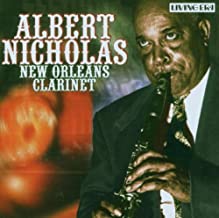
Daily Dose Of Jazz…
Albert Nicholas was born on May 27, 1900 in New Orleans, Louisiana and his primary instrument was the clarinet, which he studied with Lorenzo Tio in his hometown of New Orleans. Late in the 1910s he played with Buddy Petit, King Oliver, and Manuel Perez.
Spending three years in the Merchant Marines, he then joined Oliver in Chicago, Illinois from 1925 to 1927. After time in East Asia and Egypt, he returned to New York City in 1928 and played with Luis Russell until 1933. During this time in the city Albert played with Red Allen, Charlie Holmes, and J. C. Higginbotham. He would later play with Chick Webb, and Louis Armstrong with Russell and Jelly Roll Morton.
The Dixieland jazz revival of the late 1940s reinvigorated his career, playing with Art Hodes, Bunk Johnson, and Kid Ory. Nicholas had a regular gig with Ralph Sutton in 1948. In 1953 he moved to France and except for recording sessions in the U.S. in 1959-60, he remained there for the rest of his life.
Clarinetist Albert Nicholas, who was active from his teen years until his death, passed away on September 3, 1973 in Base, Switzerland.
More Posts: clarinet,history,intrumental,jazz,music






